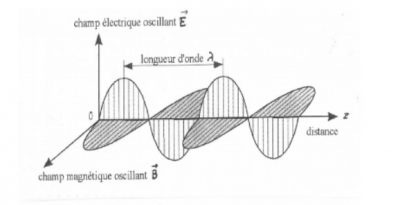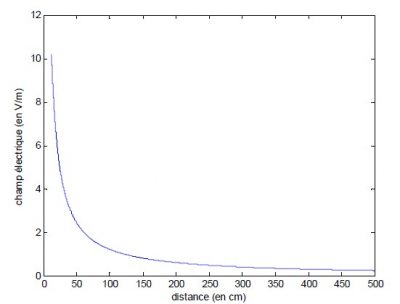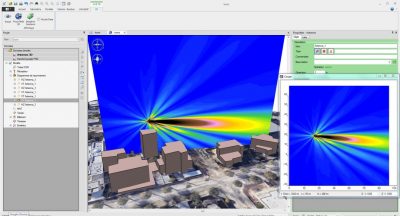Basic knowledge of radiofrequencies and wireless communications
PDF1. What are electromagnetic waves?

[Source: https://www.encyclopedie-environnement.org/en/air-en/colours-sky/]

2. Radio frequencies and wireless communications
Radio frequencies are electromagnetic waves, also known as radio waves or frequencies, whose frequencies are by convention lower than 3000 GHz according to the International Telecommunication Union [1]. This range includes frequencies that are also known as radio waves, high frequencies, microwaves or even microwaves. The frequency bands are officially allocated for the various applications [2]. The so-called millimetre waves (due to their wavelength in the order of a millimetre) are located in the upper part of the radio frequency range. Infrared and visible radiation are above 300 GHz.
3. Wave propagation in space

4. Wireless communications and mobile telephony
More than a century ago, radio frequencies were used for radio, followed by television in the 1960s. In addition, many wireless communication systems have developed (Wi-Fi, Bluetooth, connected objects, etc.), including the fixed wireless home phone (DECT). These technologies, especially mobile telephony, have grown rapidly over the past 30 years. Like most technologies, they have been constantly evolving since their invention. The wireline telephone is gradually disappearing and mobile telephony is now part of public services; coverage of the territory is an obligation for operators [3].
4.1. Mobile telephony: how does it work?

In France, several tens of thousands of base stations, commonly called relay antennas, are operated by four separate networks. There are now about seven billion subscriptions in the world [4]. Some countries have never had wireline telephony before because of the heavy infrastructure required.
4.2. Evolution of mobile telephony over time: 1, 2, 3, 4 and 5G

In France, the frequency ranges used (or to be used) according to the mobile telephony generation are as follows
2G: 900 MHz and 1.8 GHz
3G: 900 MHz and 2.1 GHz
4G: 700 and 800 MHz, 1.8; 2.1 and 2.6 GHz
5G: 700 MHz to 2.6 GHz, around 3.5 GHz, and in the future, around 26 GHz.
It should be noted that WiFi has long been operating at 2.4 GHz and 5 GHz, and probably soon at 6 GHz [9].
5. Some orders of magnitude
The power of wireless communication systems ranges from milliwatts to a few watts for proximity devices. The most powerful transmitters are far from the body. Telephone relay antennas have a power of about 1 to 50 watts depending on the area covered. Television or radio transmitters can reach several thousand watts and are located high up, generating an electric field of the order of V/m on the ground. The power of radio equipment intended for general public use rarely exceeds 1 or 2 watts. For example, 2.4 GHz WiFi routers emit a maximum of 100 mW, and the order of magnitude is similar for DECT (fixed wireless) phones.
6. How to measure the level of exposure?
In the radio frequency range, the level of exposure at a given location can be obtained by measuring the electric field or the magnetic field, as both vary in the same proportions. The level of exposure is usually expressed in terms of electric field (volts per metre, V/m) or power density (watts per square metre, W/m2). These two quantities are related to each other and can be obtained using field strength meters adapted to the frequency range under consideration, following a rigorous protocol [10]. For technical reasons, these devices are only able to measure the electric field correctly at a certain distance from the source. They cannot be used in the vicinity of a mobile phone or other transmitting device located close to the body, although they still display a value, which is false! It is then necessary to use more sophisticated tools to measure the specific absorption rate (SAR) which quantifies the amount of energy absorbed per kilogram and is expressed in W/kg. These measurements are carried out in specialized laboratories. They provide the maximum level of exposure to people that can be reached when the device is operating at full power.
Notes and references
Cover image. [Source: image obtained with the MithraREM software, provided by CSTB]
[1] International Communications Union, Radio Regulations, 2012. On itu.int
[2] ANFR, Tableau national de répartition des bandes de fréquences
[3] Mobile operators’ obligations towards the State and users of their services
[4] International Telecommunication Union, World Telecommunication/ICT Development Report and Database.
[5] GSM: Global System for Mobile Communications; UMTS, Universal Mobile Telecommunications System; LTE, Long Term Evolution (mobile telephone standards).
[6] The deployment of 5G, on anfr.fr.
[7] ARCEP, Dossier 5G, Technical aspects of 5G: intertwining 4G and 5G, online resource of 10/11/2020. On arcep.fr
[8] Information on the deployment of 5G in France on the ARCEP website (arcep.fr)
[9] ANFR, ” A new band for Wifi at 6 GHz?“, Anfr news, 2 June 2020. On anfr.fr.
[10] ANFR, Protocole de mesure. Version 4.1, October 2019.




